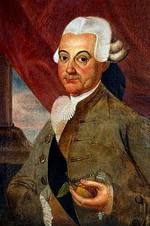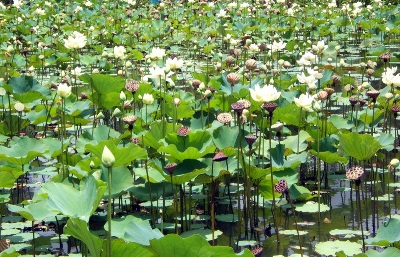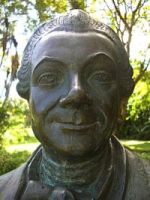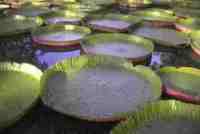By Tony Smart
Before anyone had ever heard of Greenpeace and the WWF, and long before Al Gore became an environmental superhero, there was one man who is generally credited for advancing the first theory on how mankind can destroy the environment, linking deforestation with rainfall and climate change.

The man was Pierre Poivre, who three centuries late, is still a famous figure in Mauritius, with at least one school named after him and several statues located around the island including one of the finest botanical gardens in the world, the Pamplemousses Gardens.
Born the son of a merchant in Lyons, France, on 23 August 1719, he was raised by missionaries of the order of St Joseph to prepare priesthood. At 20 he was still too young to take holy orders before being ordained so he was dispatched to China as a missionary for a few years by the Society for Foreign Missions of Paris.
But in China all hell broke loose. He was unjustly imprisoned on the orders of a local Mandarin due to a misunderstanding. In prison he learnt Chinese to defend himself in court. Following his release, he travelled about learning Chinese methods of trade and agriculture. As he developed an interest in botany and collecting plants, Poivre started to have doubts about his chosen vocation.
Four years on, however, on the journey back to France for his ordination, the ship ‘Dauphin’ was attacked by the British. In the ensuing battle Poivre lost his right arm to a British cannonball. Captured by the British, he was eventually dropped off in Jakarta, Indonesia, where he had nothing to do but observe the Dutch spice trade. By then, he had abandoned his desire to be a priest.
Instead he decided to break the Dutch monopoly on the spice trade. This despite the Dutch’ death penalty on any ‘spice hunter’ attempting to do so. At that time, spices fetched the same prices as gold so there was ample incentive for ‘spice hunters’ to risk all in this adventure.
Upon his return from Indonesia in 1746, he stopped over at the French owned Ile de France (later to be called Mauritius) and found it to have the ideal climate for cultivating spices. Two years later, he approached the French East India Company in France, who at that time administered Mauritius, with his ideas. The following year they commissioned him, effectively on a secret mission, to travel to Cochin-China (now known as the southern region of Vietnam), the Philippines, the Moluccas and Madagascar in search of spice plants that could be transplanted safely to Mauritius and cultivated there, providing an alternative source of spices to the Dutch monopoly.
Making deals with Chinese traders in the Philippines, the Governor of Portuguese Timor, and sundry others Poivre acquired
young plants and seeds of important spices like nutmeg, cloves, cinnamon and pepper and returned to Mauritius with them. Landing on 2 December 1753 he proceeded to cultivate these plants during a three-year stay on the island, transforming an old French East India Company nursery at Pamplemousses in north-eastern Mauritius into a formal botanical garden (now called the Sir Seewoosagur Ramgoolam Botanical Garden after the father of Mauritian independence).
While sailing across the Atlantic to visit French Guiana and several Caribbean islands over the years, he noticed the same kind of extensive deforestation that he’d first seen on Mauritius and began to explore the impact on the climate of tropical rainforest clearance. On his return once again to France in the mid-1760s Poivre began to speak out about his theories linking deforestation to reduced rainfall and regional climate change.
However the wider implications of his remarkable theories were quickly taken up, not by the French, but by the British, who had gained control of some heavily forested Eastern Caribbean islands (Tobago, Grenada, St Vincent and Dominica) under the terms of the 1763 Peace of Paris treaty.

Fearing climate devastation in these islands if unrestricted deforestation was allowed the British passed an ordinance in 1764 designating the mountainous part of Tobago as protected forest, “reserved in wood for rains.” This protected forest still exists today and the legislation that created it was the forerunner to all subsequent attempts to control rainfall and climate change. A year later, identical ordinances were applied to Barbados and Dominica. In the following century forest preservation legislation began to spread slowly around the world, most notably in the British, French and Dutch empires.
However it was in the French colony of Mauritius that the most comprehensive environmental measures were applied, beginning soon after Poivre’s arrival as Administrator of the island (and of nearby Reunion Island as well) in July 1767. As befits someone schooled as a missionary, Poivre was known to have been anti-slavery, against mercantile capitalism, seriously hostile to absentee landlords and disapproving of what he called “bullion accumulation.”

Instead he favoured using the latest agricultural methods to increase food production, enhance rural economies and to protect the natural beauty of Mauritius. He soon hooked up with one Bernardin de Saint Pierre, the Colonial Engineer of Mauritius and a disciple of the famous French political philosopher Jean-Jacques Rousseau. Saint Pierre’s writings have been acknowledged as the first proper criticisms of the European impact on the world environment.
Together Poivre and Saint Pierre may well have helped to make Mauritius the paradise it is today, as they created far-reaching, environmentally-sound legislation on the island during Poivre’s time as Administrator. Their initiatives included legislation against deforestation (leaving Mauritius with the many magnificent forests it has today), and in favour of climate control, pollution control, fisheries conservation and tree planting. They even created a Lands Tribunal to manage land, forest and water resources.
All told it’s estimated that Pierre Poivre, before leaving for France for good in 1772, had introduced more than 600 rare plants into Mauritius and the Pamplemousses Gardens from around the world, like mango and breadfruit trees, cocoa, lychees, coconut palms, ebony and mahogany trees, laurel and camphor trees.

With the environment more in danger from humanity than ever before, we should all be grateful for Pierre Poivre and his efforts. He may not have put an end to mankind’s destructive nature but at least he got us thinking about it.